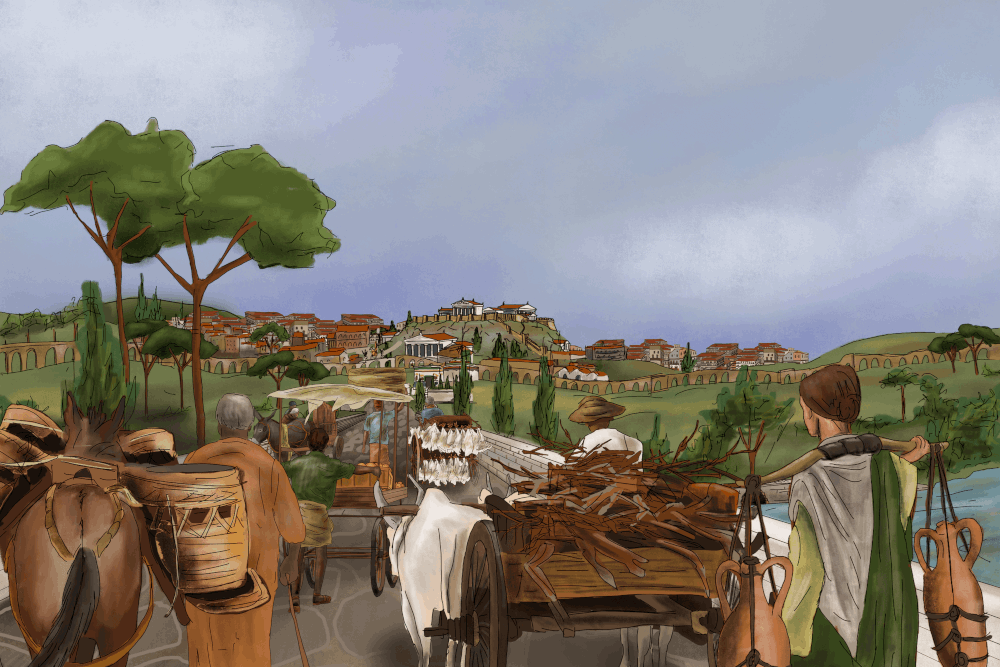
The obelisk now stands in the Piazza di Montecitorio in Rome.
 The Arch of Claudius was built to celebrate Emperor Claudius’ conquest of Britain in AD 43. The arch has not survived, but we can get an idea of what it looked like from this coin.
The Arch of Claudius was built to celebrate Emperor Claudius’ conquest of Britain in AD 43. The arch has not survived, but we can get an idea of what it looked like from this coin.

A Roman road (the Via Appia) lined with tombs, as it is now. Roman tombs were placed beside the roads outside the city boundary to separate the dead from the living.

The Ara Pacis was decorated with reliefs of processions, the imperial family, Roman gods, and important scenes from Rome’s legendary beginnings.

A Roman aqueduct. This one is in Segovia, in Spain.
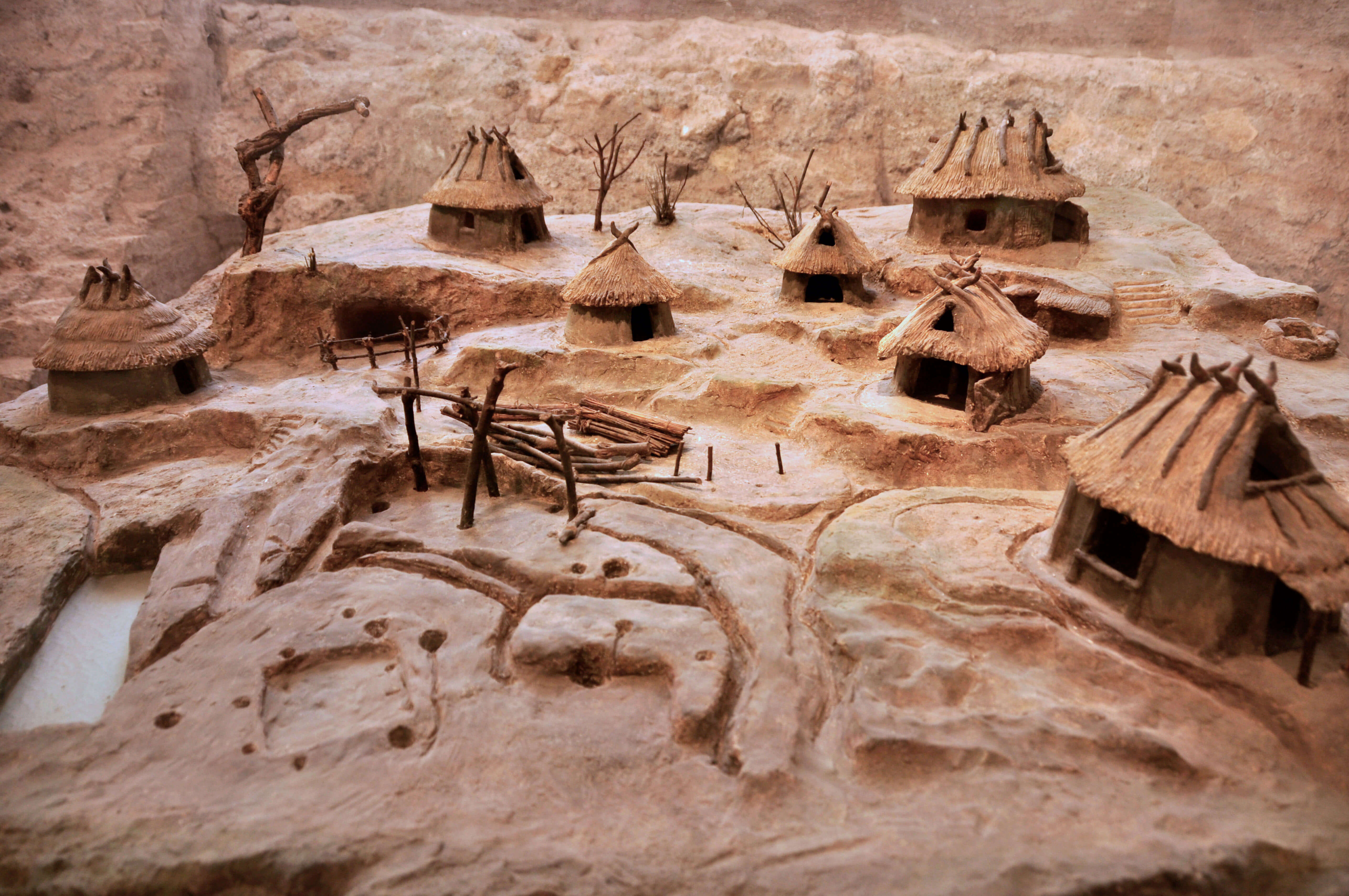
A model of the earliest settlement on the Palatine Hill.
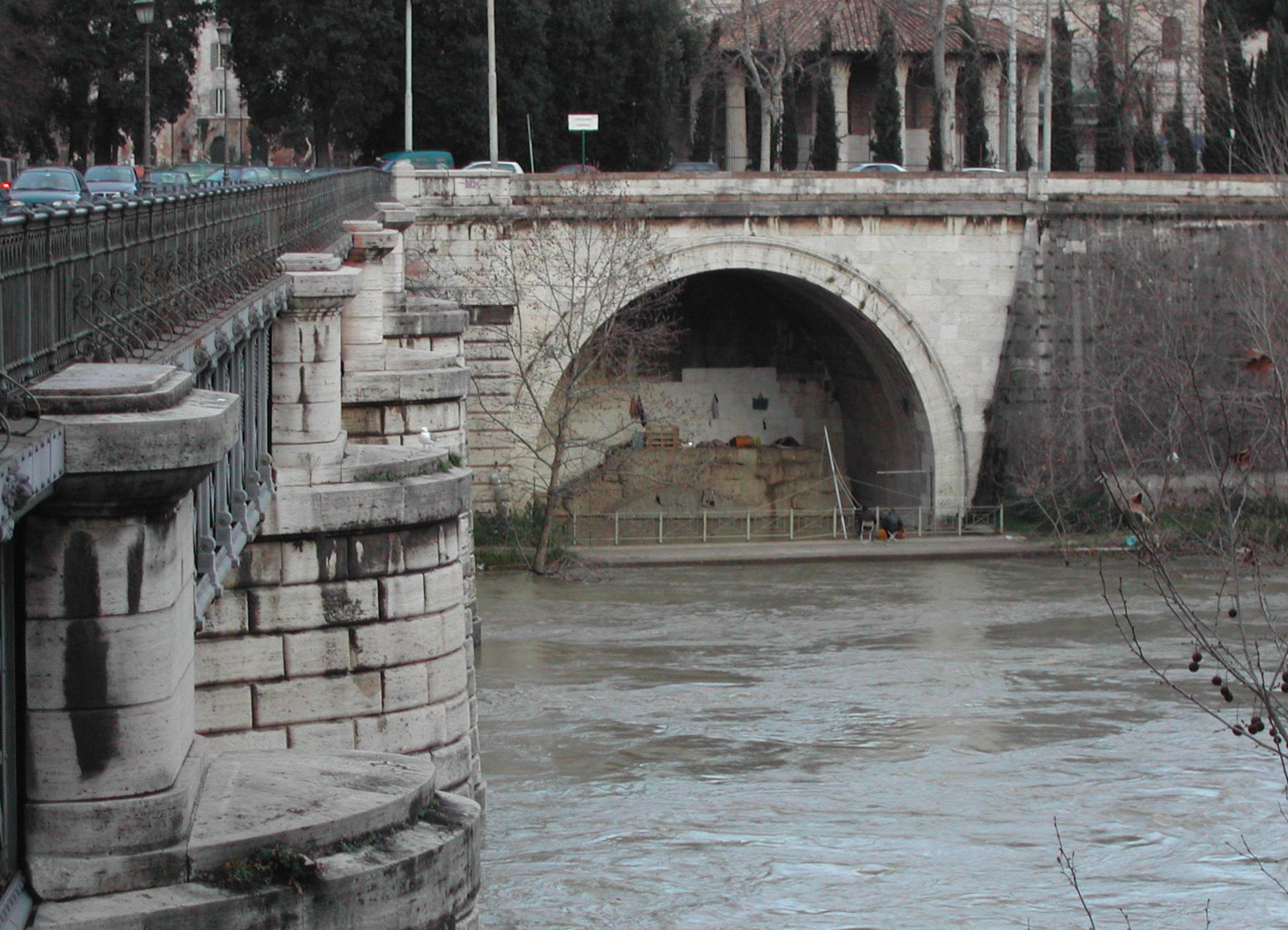
The Cloaca Maxima ran under the city from the north-east, through the Roman Forum, and into the River Tiber at the Forum Boarium. It drained excess water and removed waste and sewage. Other smaller sewers were connected to the Cloaca Maxima, serving public toilets, baths, and public buildings. Romans believed that the goddess Cloacina looked after the sewer.
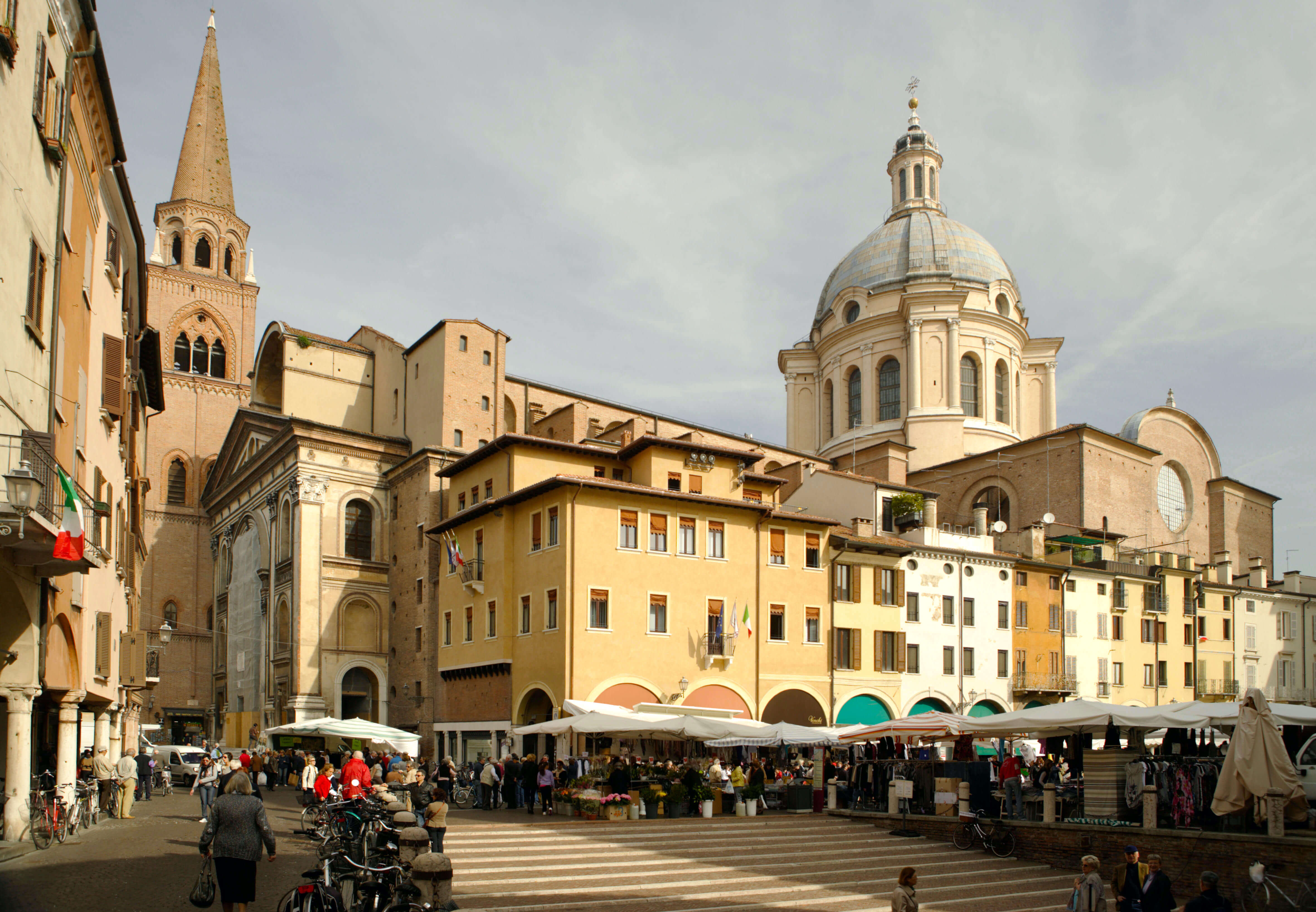
Market square in the town of Mantua, Italy.
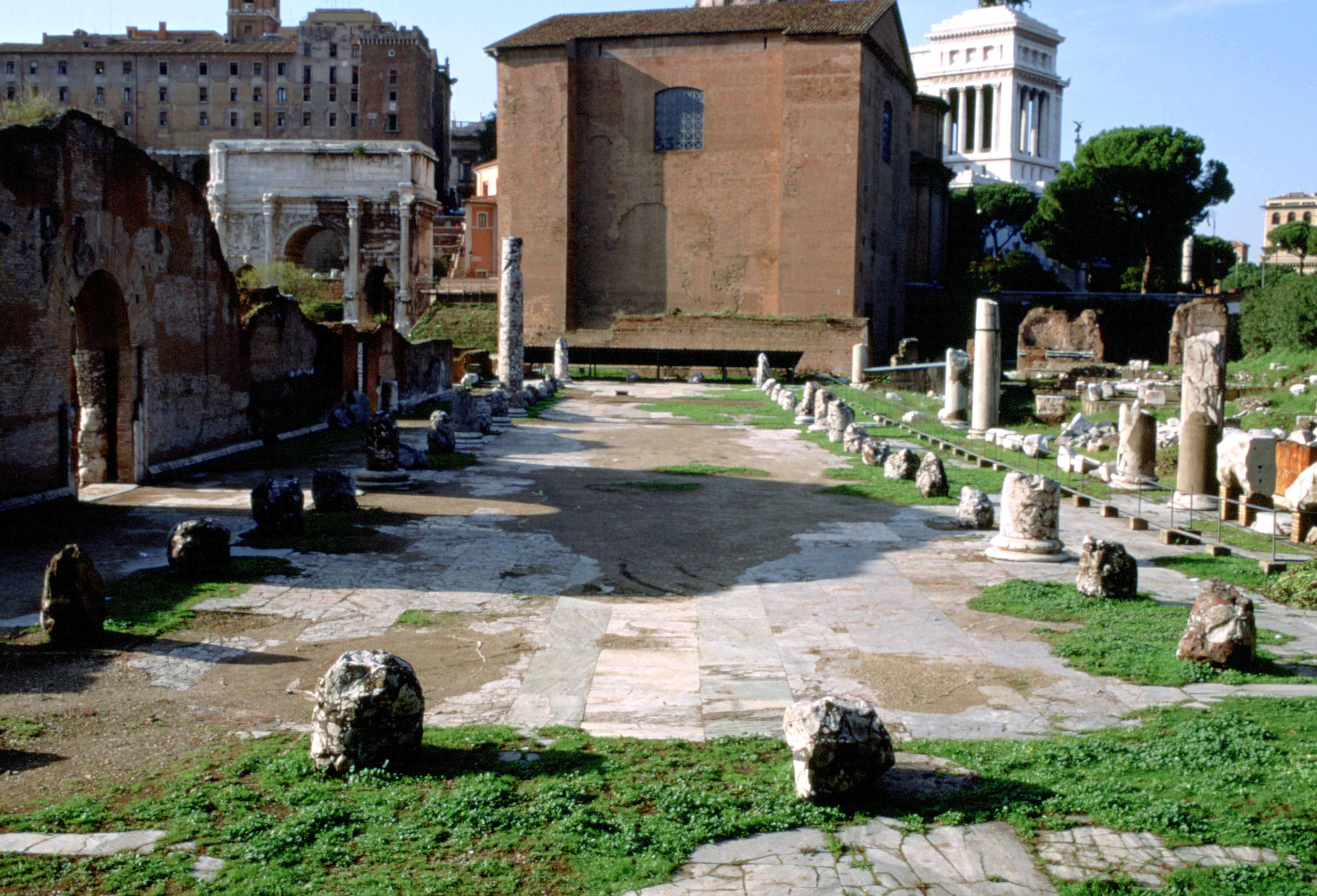
Photograph taken in the Roman Forum, showing the floor and column bases of the Basilica Aemilia in the foreground, and the side of the Senate House behind it. The Basilica Aemilia was a large hall where bankers and merchants conducted business.

A basilica was a large public hall. There were two stretching along the sides of the Forum Romanum. Their colonnaded fronts provided shade for people to walk and socialize. The Basilica Julia housed the law courts.
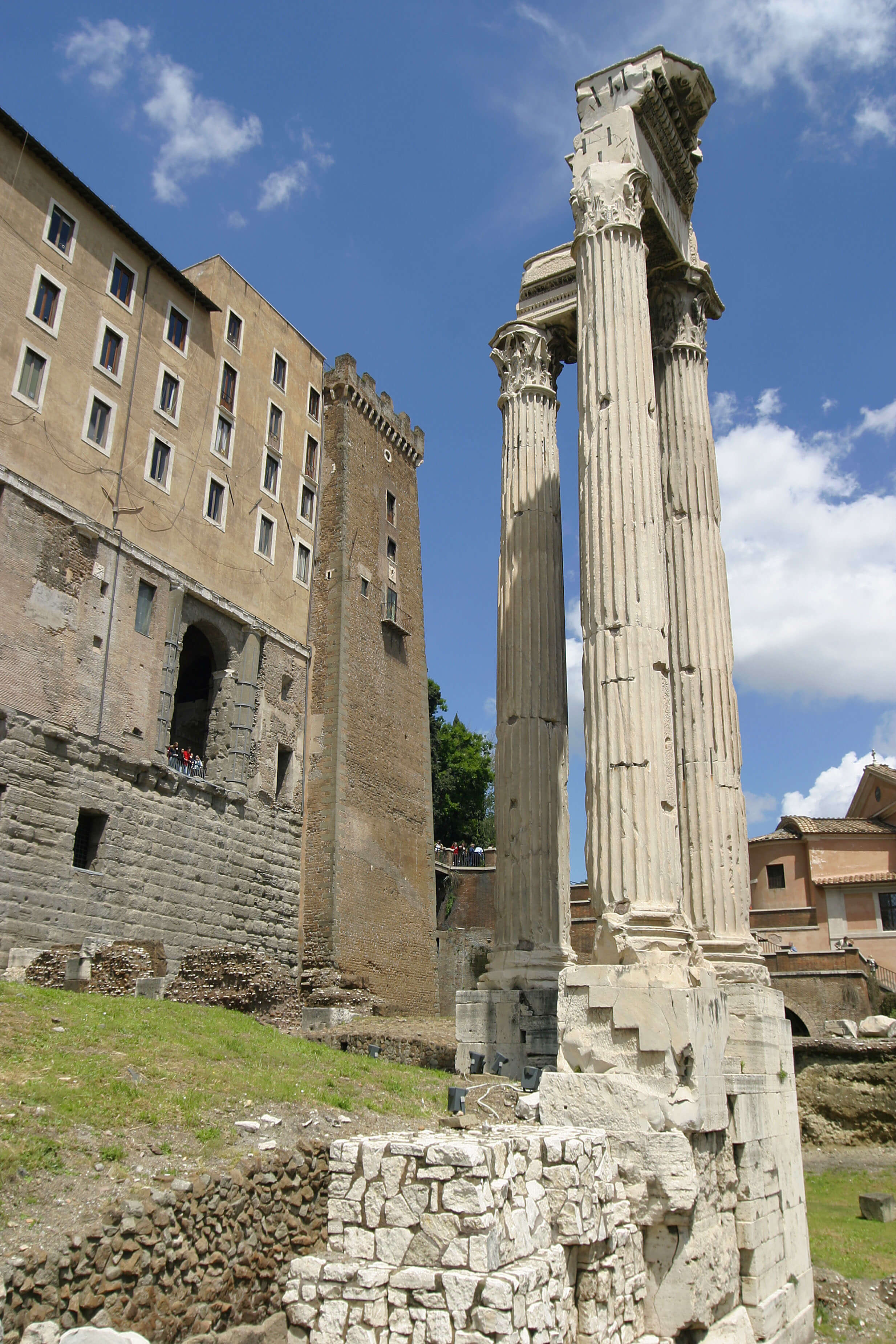
Concordia was the goddess who symbolized unity among the different classes of the Roman people. Her temple was a lavishly decorated marble building, and some of it still survives.
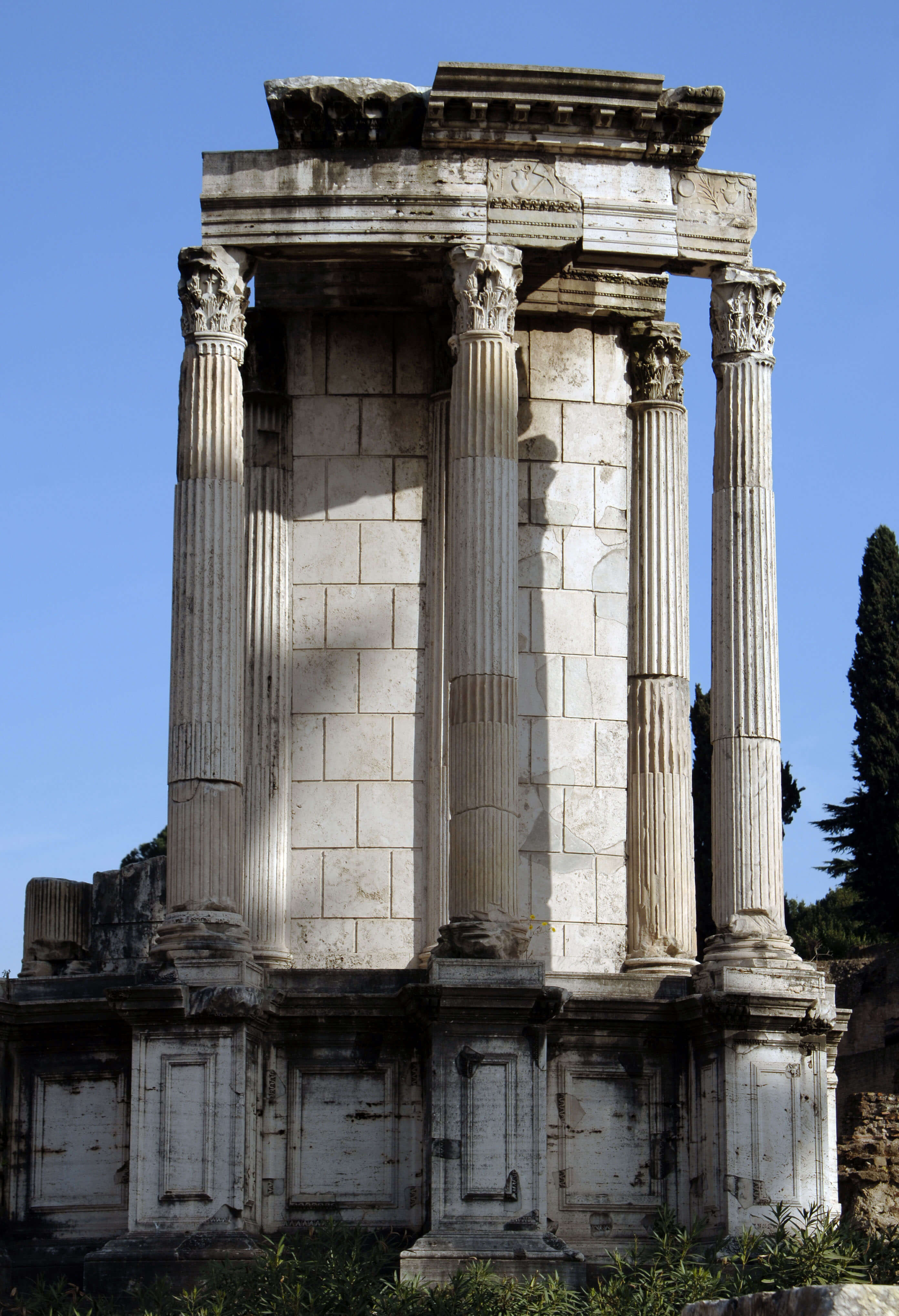
Vesta was the goddess of the hearth and of fire. Roman temples were usually rectangular, but the shrine of Vesta was a small circular building. Inside the shrine was the sacred fire, which symbolized the survival and prosperity of Rome and was never allowed to go out.
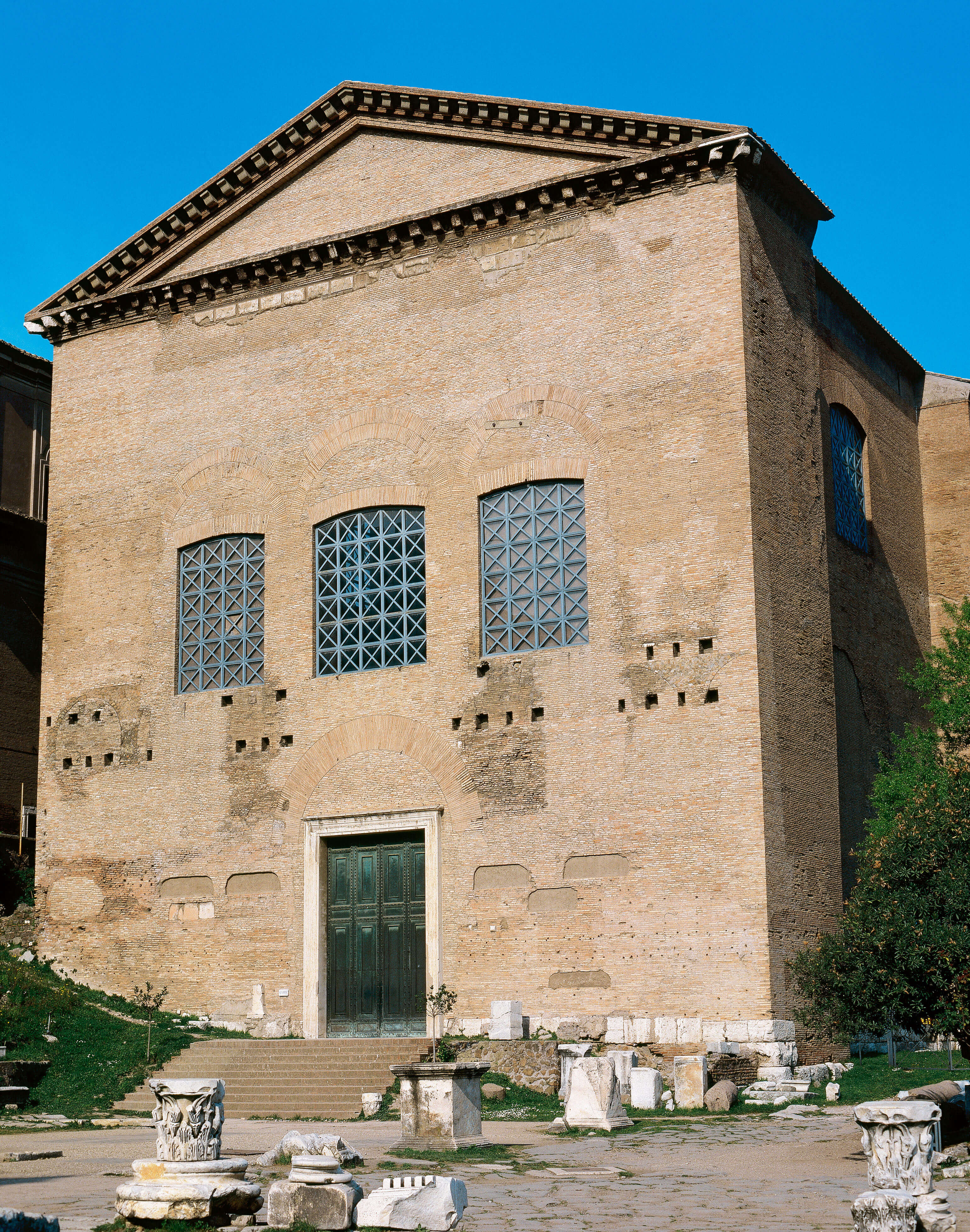
The Curia was the Senate House, where the emperor and Senate met to discuss affairs of government. The building which now stands in the Forum Romanum is a later restoration.
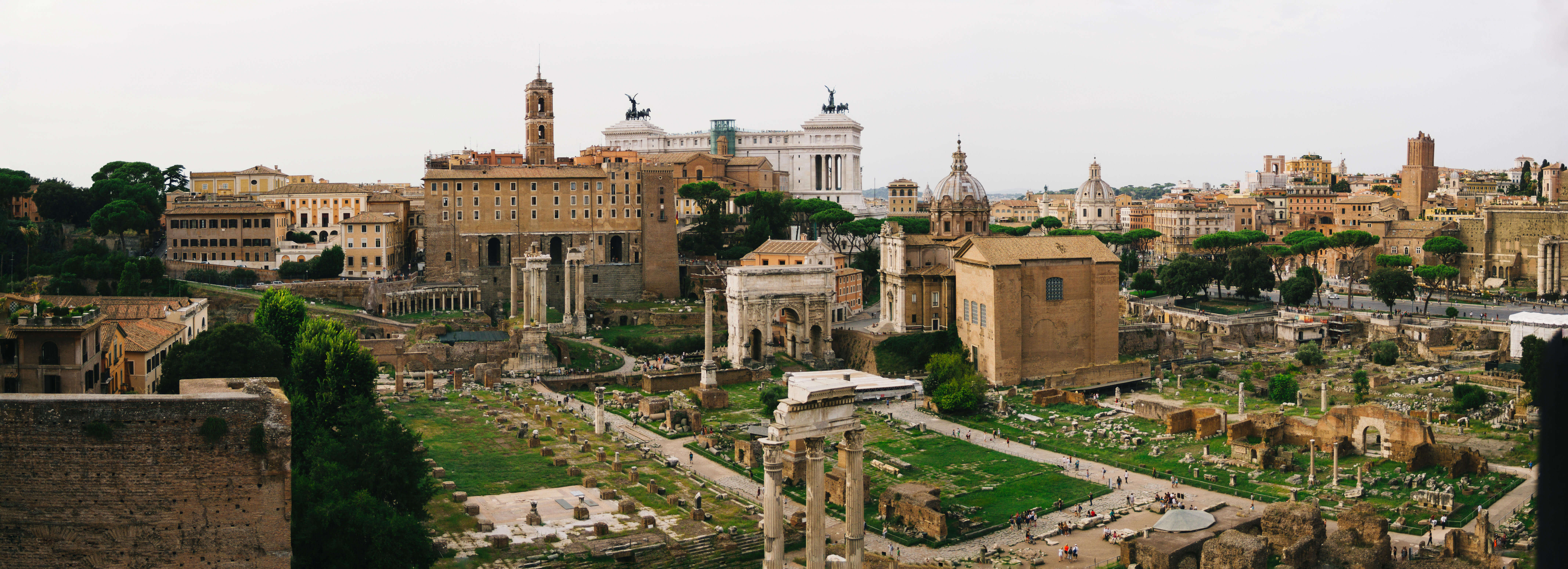
The Forum Romanum today, facing the remains of the Temple of Concordia.
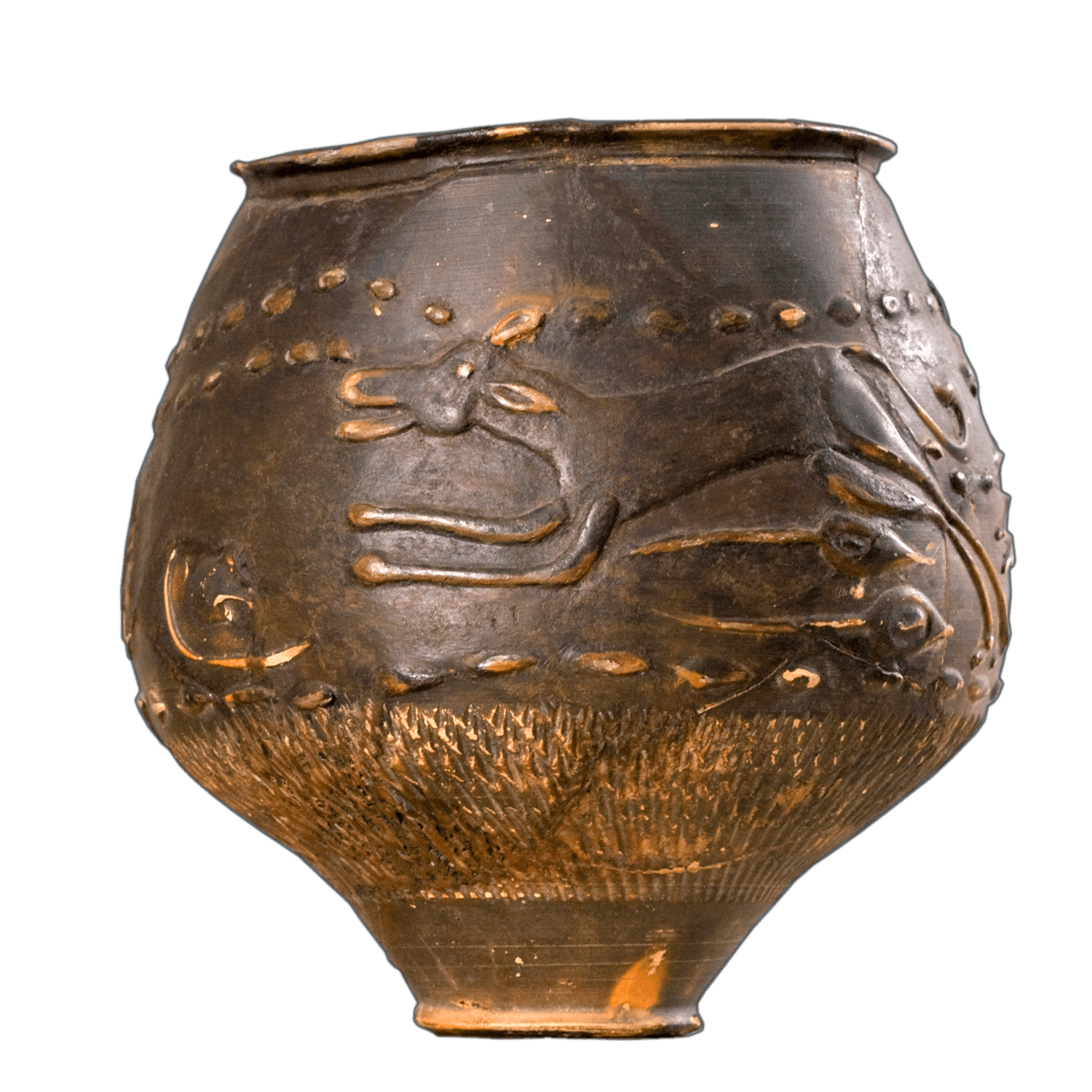
A cup showing a hunting dog.
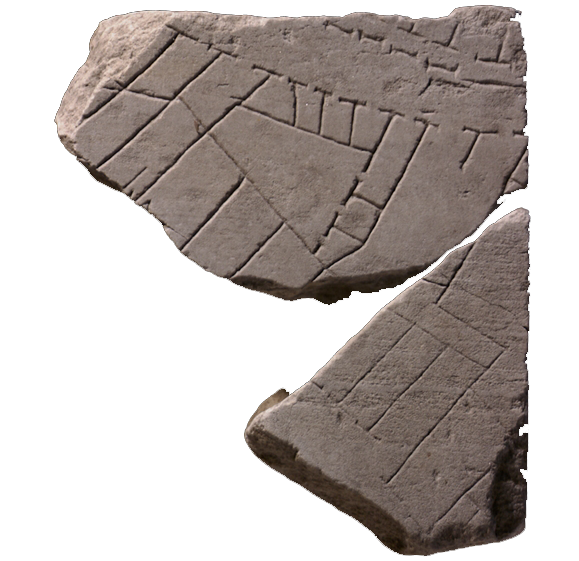
Fragments from the Fōrma Urbis Rōmae, the map of the city of Rome.
The Forma Urbis Romae was an enormous map, measuring about 18 x 13 m and created around AD 211. Inscribed on stone was the plan of every architectural feature in the ancient city, from large public monuments to small shops. Only 10–15% of the original stone map survives, broken into 1,186 pieces.

Fragments from the Fōrma Urbis Rōmae, the map of the city of Rome.
The Forma Urbis Romae was an enormous map, measuring about 18 x 13 m and created around AD 211. Inscribed on stone was the plan of every architectural feature in the ancient city, from large public monuments to small shops. Only 10–15% of the original stone map survives, broken into 1,186 pieces.
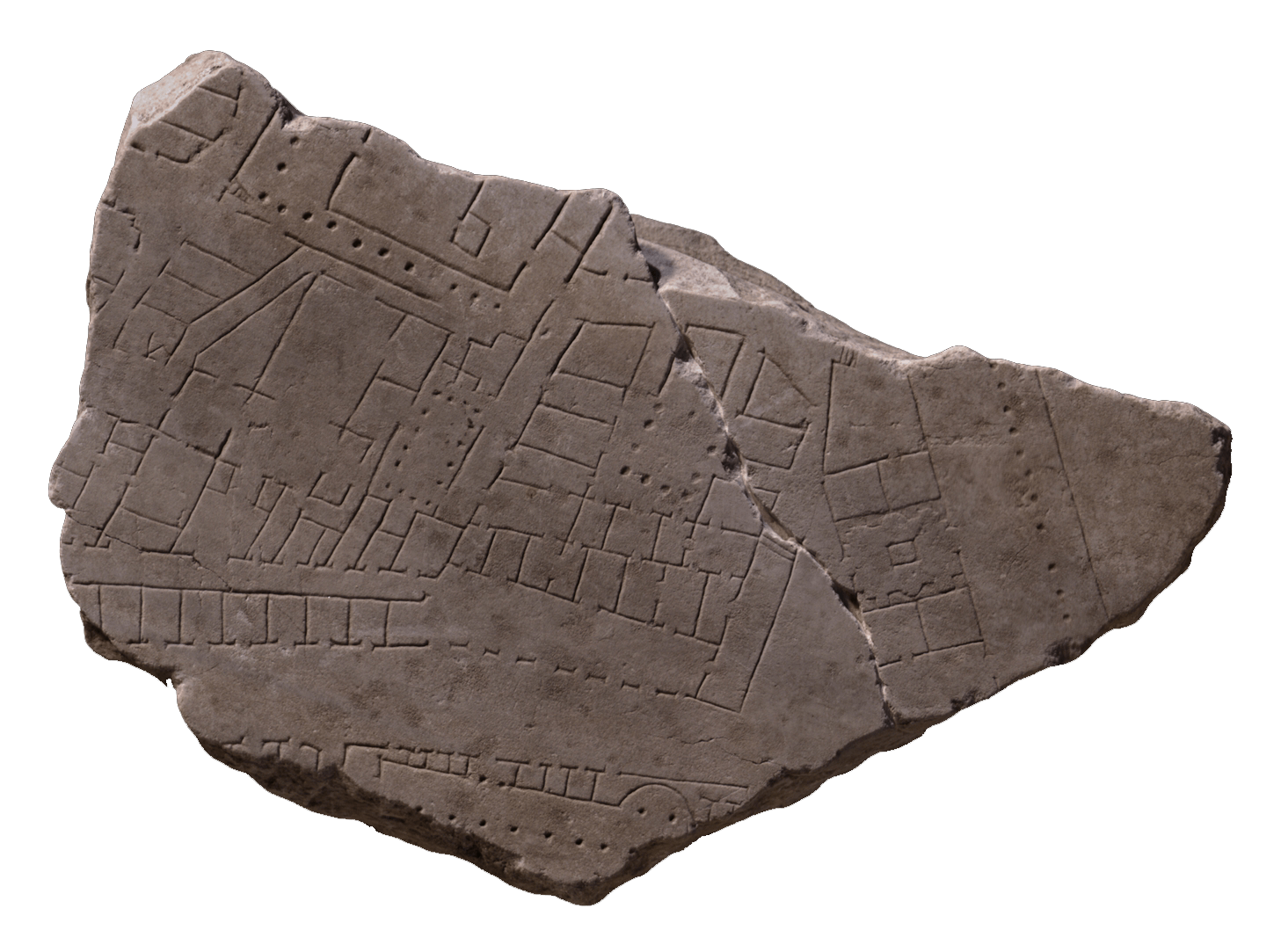
Fragments from the Fōrma Urbis Rōmae, the map of the city of Rome.
The Forma Urbis Romae was an enormous map, measuring about 18 x 13 m and created around AD 211. Inscribed on stone was the plan of every architectural feature in the ancient city, from large public monuments to small shops. Only 10–15% of the original stone map survives, broken into 1,186 pieces.
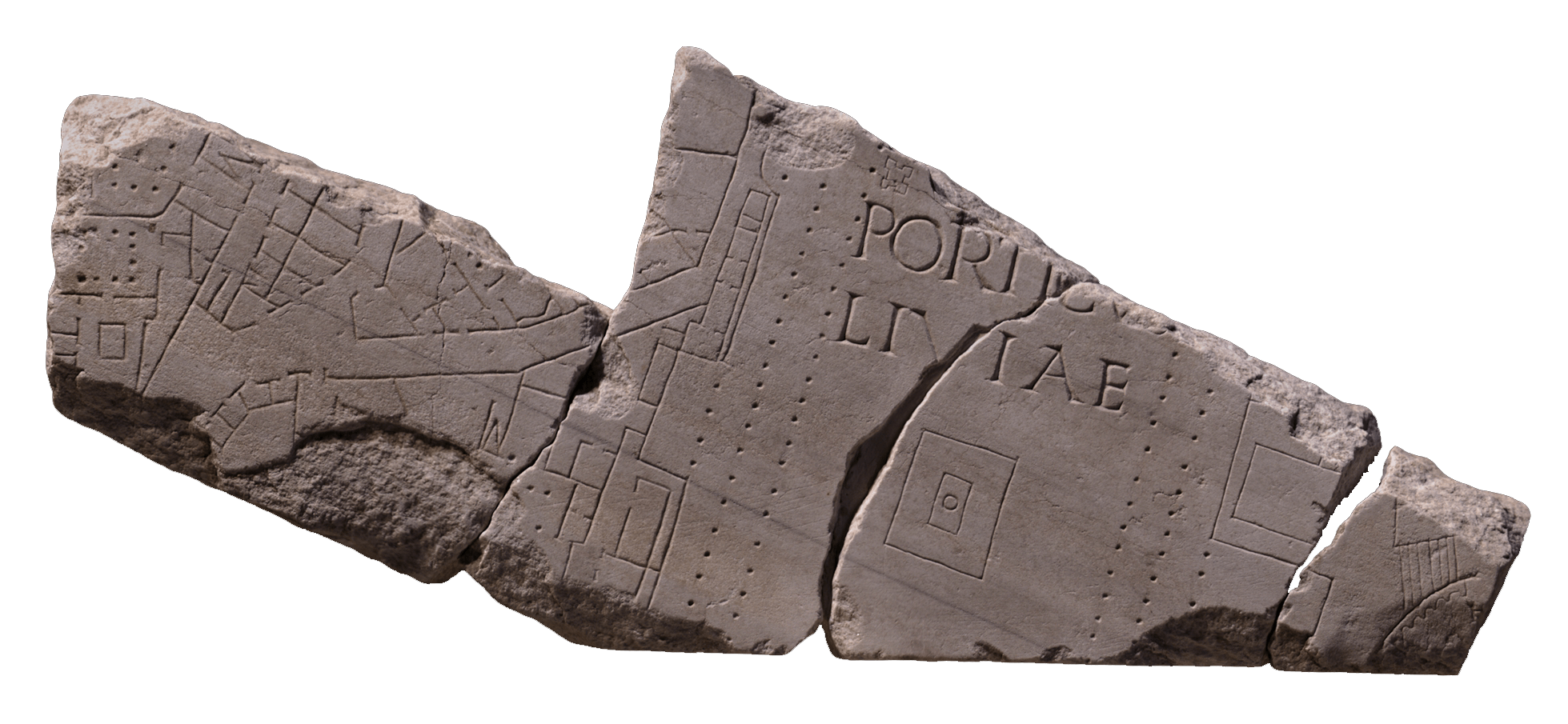
Fragments from the Fōrma Urbis Rōmae, the map of the city of Rome.
The Forma Urbis Romae was an enormous map, measuring about 18 x 13 m and created around AD 211. Inscribed on stone was the plan of every architectural feature in the ancient city, from large public monuments to small shops. Only 10–15% of the original stone map survives, broken into 1,186 pieces.
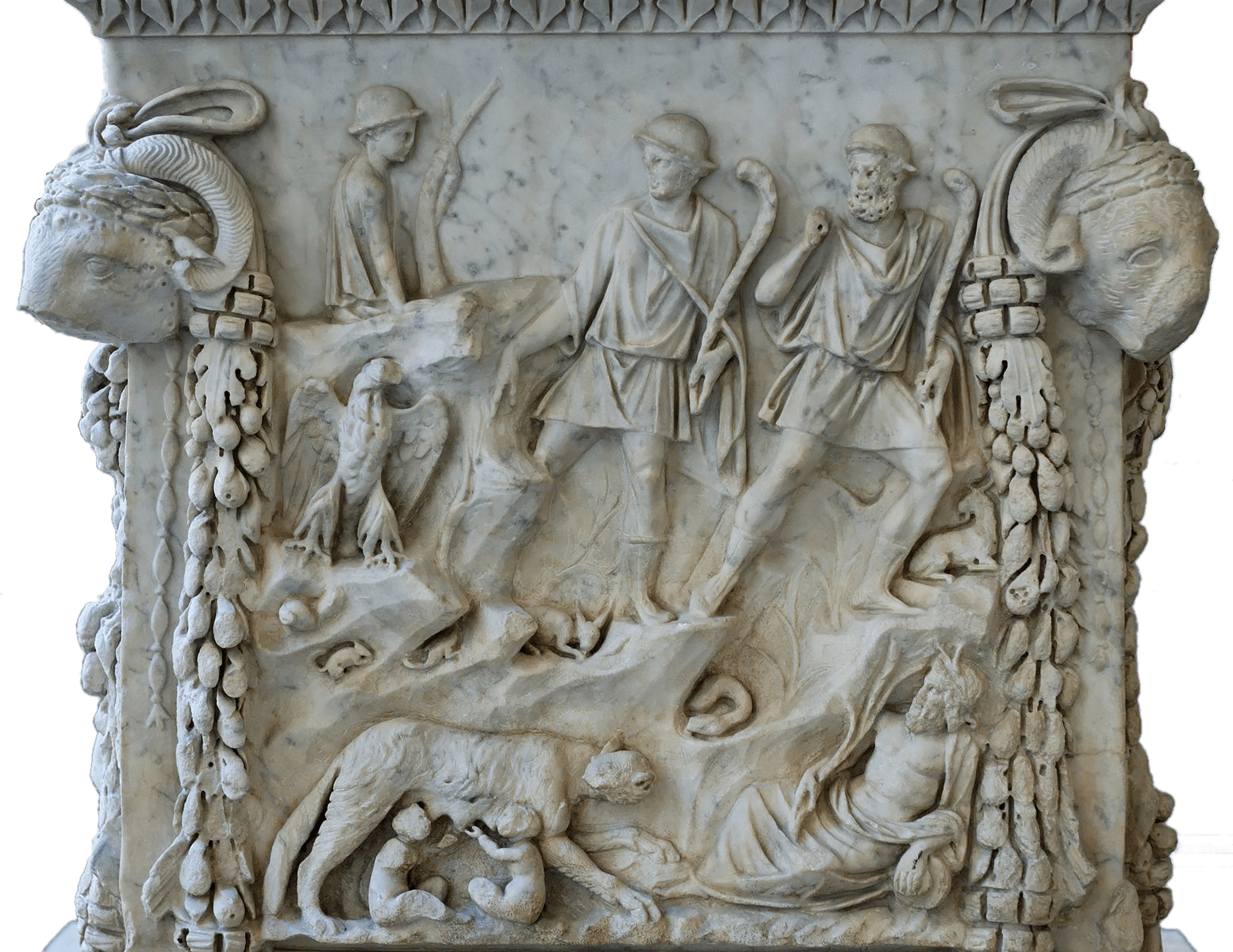
Altar to Mars and Venus.
❮
❯

